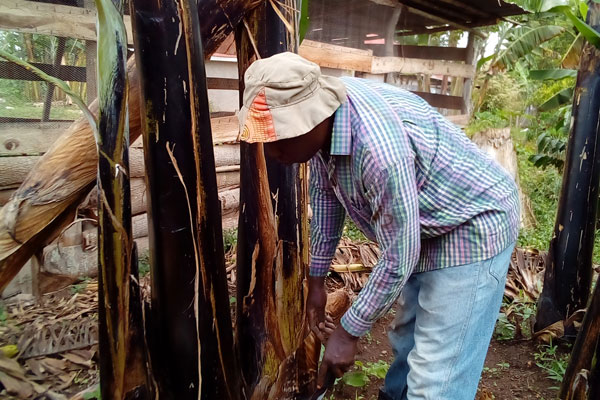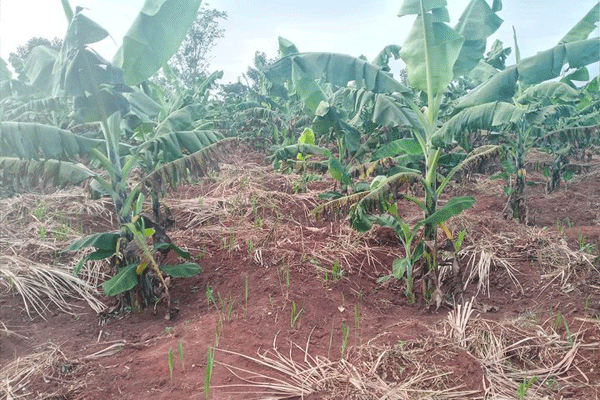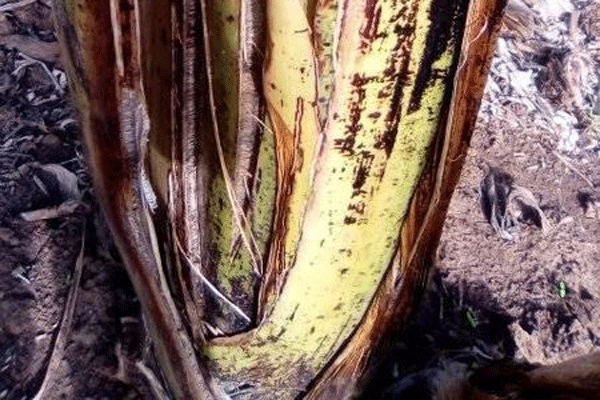What should I do in a dry season to keep my banana plants okay?

Lwasa demonstrates how to mulch a banana plantation. PHOTO/FRED MUZALE
What you need to know:
- The trees serve other purposes such as wind breaking, improving soil fertility and providing staking materials while acting as a source of fuel for wood and animal feeds.
Organic matter improves soil structure by binding soil particles together hence improving drainage.
Application of organic matter in soil has been found to be one of soil water conservation strategies.
According to the extension training guide by the National Agricultural Research Organisation (Naro) on growing bananas, irrigation, water harvesting and mulching are key strategies to ensure adequate soil moisture. Inter-planting with Mituba trees also keeps the garden cool and wet.
Mulching, especially, offers benefits including better water retention, reduces soil erosion, improves soil fertility in the long run and helps suppress weeds.
Proper mulching should be between at least 8-15 cm thick placed 1.5-2ft from the plant.
Water harvesting in the garden needs to be considered by digging large trenches running in the direction of the slope, especially in areas prone to flooding.
Small water toughs/basins should be used to retain water in the field.
When agro-forestry is taken as an option, recommended trees include albizia, calliandra, castor trees (erect varieties), gravelia and maesopsis (musizi). The trees can be planted as hedge rows or scattered in banana field depending on species and purpose.
The trees serve other purposes such as wind breaking, improving soil fertility and providing staking materials while acting as a source of fuel for wood and animal feeds.
*Answered by Dr Florence Akwatulira, an agro forester at the National Coffee Research Institute (NaCORI), Mukono.
Compiled by George Katongole | Send your questions to [email protected]




